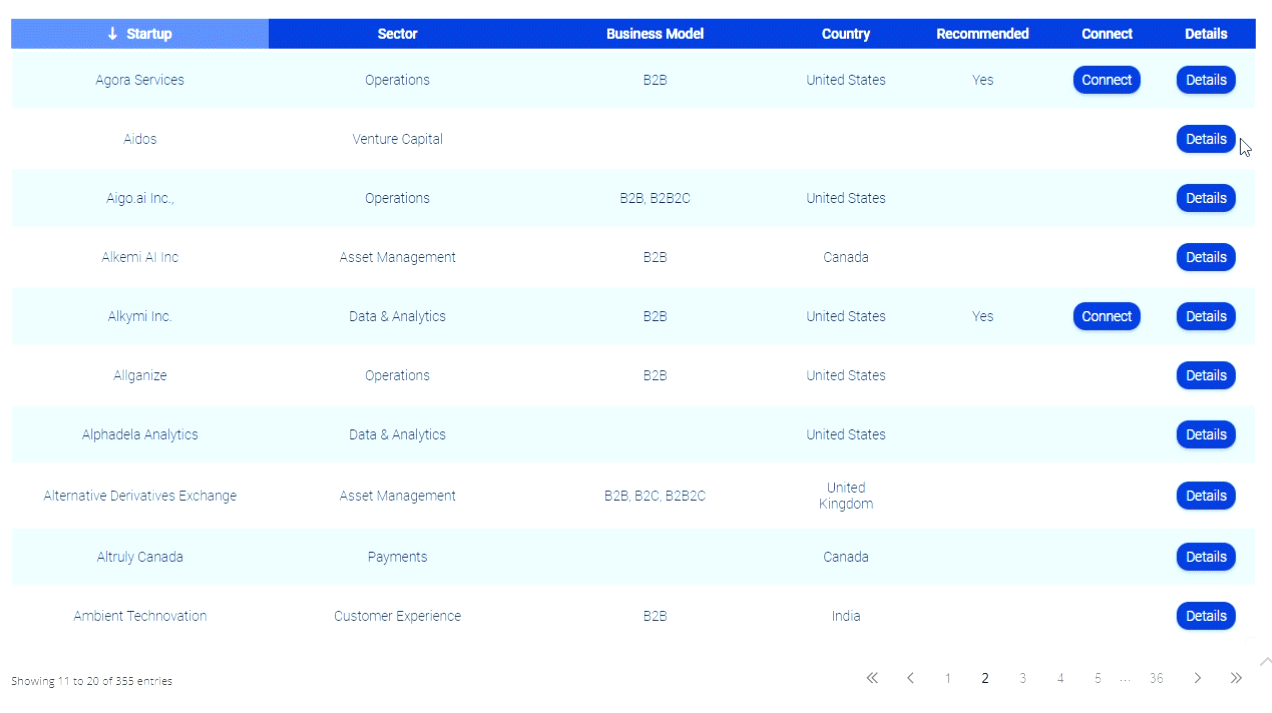Everything You Need to Know About Prepaid
 My friend Dan Schatt recently published a great book called Virtual Banking (incidentally you can buy it here). Dan was kind enough to ask me my thoughts on the prepaid space, which I have always felt poses great opportunities for entrepreneurs, and great risks for incumbents. I contributed the below essay, which found its way into book, alongside great content from Dan, Renaud Laplanche from Lending Club and many other thoughtful folks.
My friend Dan Schatt recently published a great book called Virtual Banking (incidentally you can buy it here). Dan was kind enough to ask me my thoughts on the prepaid space, which I have always felt poses great opportunities for entrepreneurs, and great risks for incumbents. I contributed the below essay, which found its way into book, alongside great content from Dan, Renaud Laplanche from Lending Club and many other thoughtful folks.
Until recently, there were three types of payment cards, and each of them stayed pretty much in its place. Credit cards and debit cards were issued by banks, the former to provide transactional lending (pay later), and the latter to provide access to a current account (pay now). Prepaid cards, the new kid on the block, were still largely a gifting vehicle, but increasingly also included a general‐use, open‐loop reloadable version. These cards were a stored value account purchased either fully loaded or where value could be added through various load mechanisms (pay before).
But now that old triumvirate is crumbling. In particular, the prepaid card has rebelliously left its historical place as either a gift card or a card of last refuge for the underbanked, and has now entered the mainstream. This development poses many risks for community financial institutions, as the prepaid architecture gives rise to all sorts of entrepreneurial competition. That said, prepaid is also a significant opportunity to broaden product lines and modernize customer‐facing applications without massive changes to core processing systems. How financial institutions grapple with, take advantage of, or succumb to prepaid may determine their relevance in the coming decades.
What do we mean by prepaid, and why is it so disruptive? The trade association for prepaid cards, the Network Branded Prepaid Card Association (NBPCA), defines prepaid cards as a “non‐credit payment option,” 3 a classic example of the fallacy of defining something by what it is not. The organization does go on to usefully enumerate the largest categories of prepaid card: General Purpose Reloadable (GPR), Payroll, Incentive, Healthcare, Government Disbursement, and Gift. This inability to define prepaid is a general problem, and the NBPCA provides a version of the most common type of answer: It isn’t a bank account, it isn’t a credit card, and here’s a list of examples of what it can be.
The problem with this definition and all of its variants is that they are quickly becoming dated. How is a prepaid account different from a bank account, when it comes with paper checks, automated teller machine (ATM) access, and Federal Deposit Insurance Corporation (FDIC) insurance? How is it different than a credit card now that companies like Insight Card Services and AccountNow offer hybrid products with a short‐term lending component?
These product distinctions (checking, savings, line of credit, credit card, etc.) have always been driven by regulators and bank technology vendors, not by consumer preferences in any event. The prepaid architecture is allowing them to collapse into a single account structure, with many diverse features, making the definition of prepaid as what it is not now impossible. As the categories of prepaid multiply out from the six listed earlier, into Travel, Expense Management, Insurance, and Digital Content, among many others, defining prepaid by example becomes long‐winded at best.
For the purposes of this chapter, there are two important characteristics of a prepaid card or account (in general, I will use prepaid card, but it’s important to note that increasingly prepaid accounts won’t need an accompanying card):
- Prepaid cards reduce the financial institution to the role of commodity utility, allowing an independent program manager to design and market the product, as well as manage customer interactions.
- Prepaid cards have limited transactional interaction with core banking systems, in that they create an account structure that sits atop a single pooled traditional debit account. Individual transactions hit against this intermediary account structure, which in most all cases is more modern, flexible, and feature‐rich than a core banking system.
The combination of these two factors has allowed the prepaid card to be the primary vector by which entrepreneurial firms have entered the consumer financial services arena, threatening territory traditionally monopolized by banks and credit unions. These firms are redefining what can be offered to consumers and small businesses and, in doing so, shifting the basis of competition.
The latest wave of innovation in prepaid is focused on capturing the primary account for consumers, which had historically been a combination of a demand deposit account (DDA) and a savings account, almost always held by a “local” bank or credit union. Obviously, the term local when discussing financial services is fraught, given that the four largest banks control approximately 40 percent of household banking assets from central headquarters locations, but it has historically been the case that the majority of consumers chose their primary bank based on branch location, so if a Chase branch is the closest to your home or work, it is your “local” bank. Because of this dynamic, the consumer banking industry became largely a real estate play. The national banks went on a branch‐building spree, aiming to become the bank of choice in the cities and larger towns, and truly local financial institutions took comfort in the knowledge that so long as they were a convenient option in their trading area, they would get their share of deposits.
Prior to the smartphone, it was difficult for any nonbank to challenge this physical reality except on the basis of offering high interest rates for savings accounts or CDs. It is telling that the latent threat to financial institutions was always Wal‐Mart, and, in fact, prepaid partnerships with GreenDot and American Express enabled that latent threat to become very real. Wal‐Mart always had the real estate, and the prepaid architecture has allowed them to offer financial products, with a geographic density far greater than any branch network. That said, Wal‐Mart’s customer base and brand positioning are such that the customers they are siphoning off from traditional financial institutions are generally the unbanked and underbanked. The graver threat, from a customer profitability perspective, are what are often called the “neo‐banks”— nimble, entrepreneurial firms that are leveraging the prevalence of the smartphone to convince customers that physical proximity no longer matters.
Who are these neo‐banks? The most public examples are Simple and Moven, but the prepaid architecture is so straightforward and flexible that many more are just launching or in formation. Perhaps the example that proves the point most dramatically is Card.com. Card.com has created prepaid debit cards that are as fully featured as most bank accounts, and are cobranded with dozens (heading towards hundreds) of micro‐affiliates.
Effectively, you can get a “bank account” that shows the world your affection for Gay Pride, Garfield the Cat, Frida Kahlo, or The Walking Dead television show, among many others. While it’s easy to dismiss these as trivial, many banks had the same reaction when MBNA launched its affiliate model in the credit card industry, only to find itself thoroughly outflanked.
This proliferation of neo‐banks has been enabled by technology. As mentioned, the core innovation that enables mainstream adoption of branchless banking is the smartphone, but there are companion technologies that are just as instrumental. The primary category of innovation is around account opening. Traditionally, account opening was almost entirely done in a branch, as much of it had to be done in person. Companies like Jumio and Andera have now enabled Web‐based account opening, and even phone only account opening, leveraging electronic signatures. Once the account is open, technology from Mitek and others enable mobile remote deposit capture, so that checks can be loaded into an account without a branch or even an ATM visit. One by one, the reasons to visit a branch are being demolished.
In the first instance, this seems largely like a threat to community financial institutions (FIs). Not only do you have the “big four” marketing into your base, but you have national branchless players trying to poach your customers.
But let’s imagine the possibilities whereby community FIs can leverage these trends and capabilities to their benefit. The fact is that most community FIs have been offering relatively plain vanilla product because they are dependent on their core system vendor to provide them functionality, and none of the large vendors are exactly dynamic. Community FIs need to consider ways they can leverage the flexibility of prepaid technology to innovate and move more quickly.
One opportunity is generational. The demographics of credit unions and local banks are not promising for the future; to be blunt, they skew old. Unless these financial institutions can survive as the bank of choice as the wealth and locus of banking activity moves from one generation to the next, they will become increasingly irrelevant. Prepaid is one weapon in that fight.
It makes a perfect teen product, given its natural limits on overspending and the ability to add parental controls. Its useful for parents with children away at college, allowing them to load money for expenses as needed. In either of these instances, it becomes an opportunity to convert the child/ recipient into a primary account owner over time. In particular, the community FI can leverage the relationship with the parent to offer credit to the next generation, with the parent as guarantor. At that stage of life, anyone who will offer credit becomes a student’s best friend.
Another significant opportunity is within the small business segment within a community FI’s trading area. Although there are some neo‐banks now getting started to serve the small business population, no one has critical mass. These small companies are hard to reach, and frequently value their relationship with a local bank (or, less frequently, credit union) as a source of credit when needed. Small businesses have a variety of needs that prepaid can solve quite elegantly. More and more employers are offering health savings accounts (HSAs), based on prepaid technology, to their employees as an alternative to traditional health benefits. Prepaid cards can provide a less expensive alternative to paper checks for small businesses that employ the underbanked. Many industries that employ salespeople use prepaid cards as a sales incentive program; local banks are in a great position to provide this technology to small businesses. One area where prepaid has already started to make an inroad, largely driven by a PEX Card, is in the expense management area. This, too, is a product that could be logically distributed by community FIs.
If the community FI has both a solid consumer base and good relationship among the local small business community, there is an opportunity to capitalize on the opportunity presented by linking those two groups via prepaid. The economics of traditional debit, post Durbin, do not allow for bank‐funded rewards programs to generate new accounts or create loyalty.
That said, a community financial institution could leverage its relationships with local retailers to create a merchant‐funded rewards program, which helps them to drive traffic to their stores and creates a distinctive product for the bank or credit union. Further along this theme, the FI could create a specialized gift card, leveraging Restricted Authorized Network (RAN) technology to limit the spend on the card to local retailers. Again, a distinctive product for consumers that provides unique value to a financial institution’s small business customers.
As has been articulated throughout this book, new innovations in financial services are both opportunities and threats for community financial institutions. Prepaid is a dramatic example of this important point. Small banks and credit unions have traditionally survived and thrived based on their local relationships and physical footprint; the prepaid architecture has unleashed the entrepreneurial energies of dozens of new and compelling branchless competitors, who challenge long‐standing relationships and make geographic density irrelevant. Prepaid also provides a vector for innovation for community FIs themselves, enabling them to partner with entrepreneurs to create and offer cutting‐edge products to local customers who otherwise would lack awareness or access to these innovations. It is critical to recognize that there is little time to ponder this issue; the competition is on the move, and the only question is: will local banks and credit unions be as well?
Permission is hereby granted for the use requested subject to the usual acknowledgements (author, title of material, title of book, ourselves as publisher). You should also duplicate the copyright notice that appears in the Wiley publication in your use of the Material.
Any third party material is expressly excluded from this permission. If any of the material you wish to use appears within our work with credit to another source, authorization from that source must be obtained.
This permission does not include the right to grant others permission to photocopy or otherwise reproduce this material except for accessible versions made by non-profit organizations serving the blind, visually impaired and other persons with print disabilities (VIPs).











